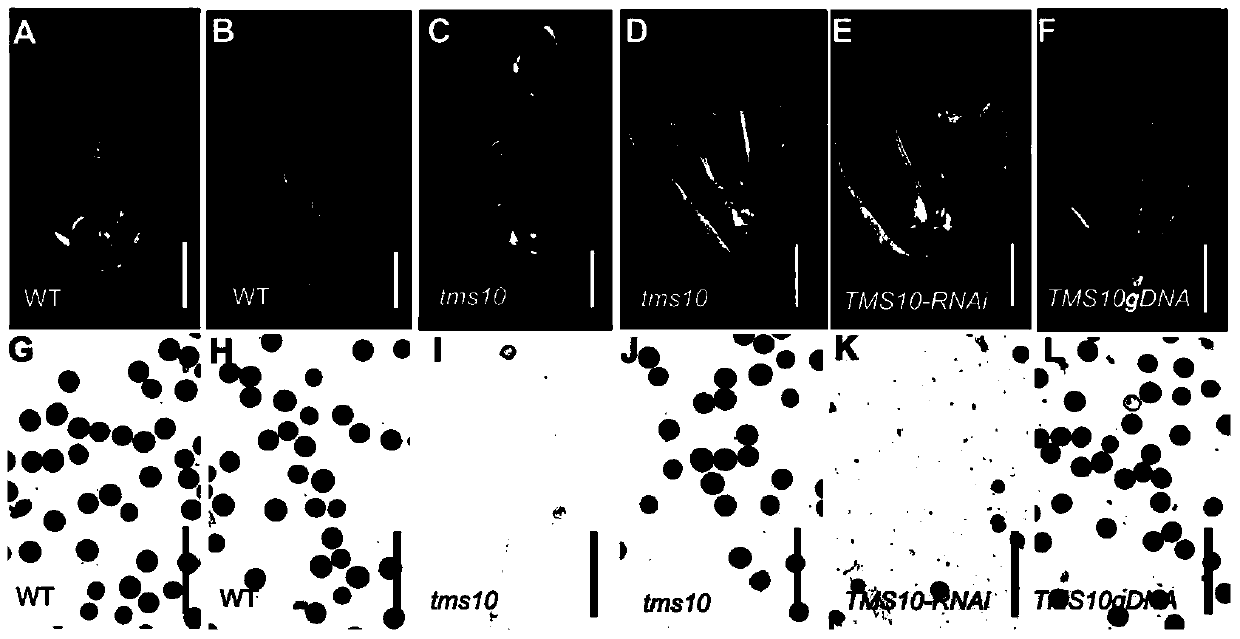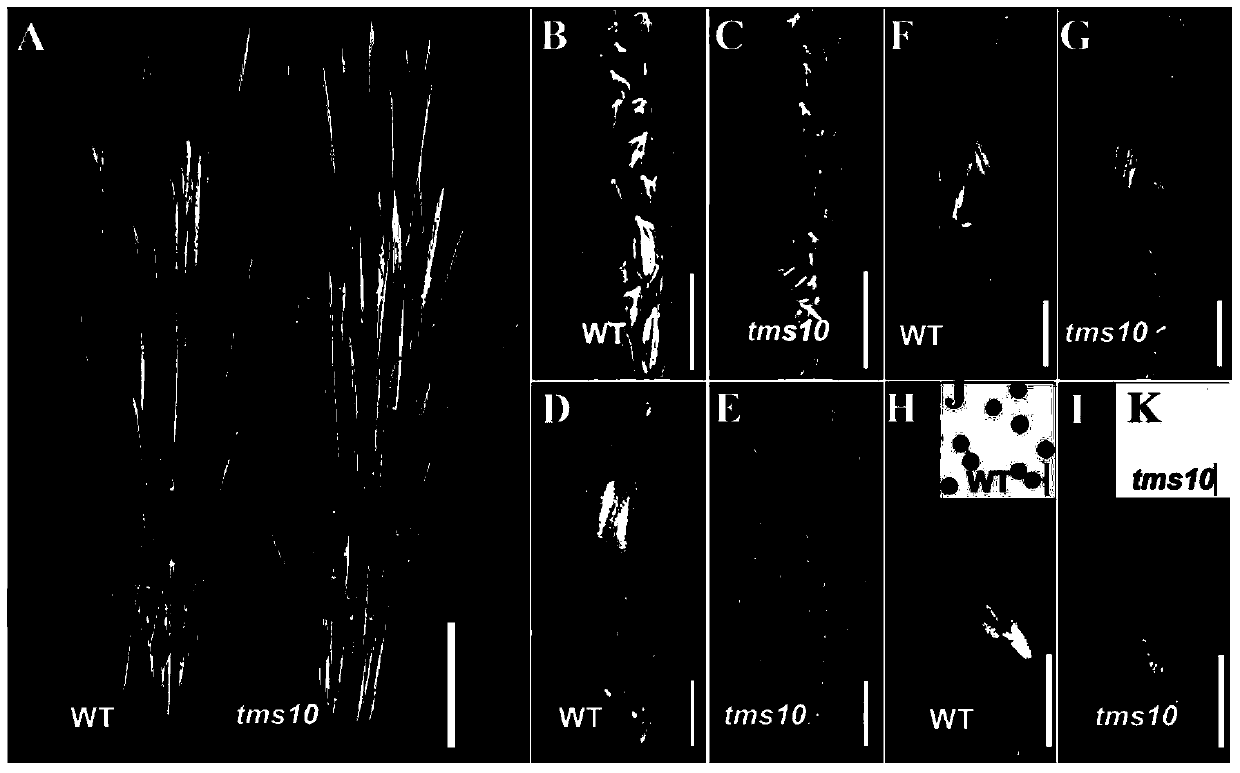Application of Rice Thermosensitive Male Sterility Gene tms10 and Fertility Restoration Method
A technology of male sterility gene, TMS10, which is applied in application, genetic engineering, plant genetic improvement, etc., can solve the problem of costing a lot of manpower and financial resources for reproduction and preservation
- Summary
- Abstract
- Description
- Claims
- Application Information
AI Technical Summary
Problems solved by technology
Method used
Image
Examples
Embodiment 1
[0041] Embodiment 1, the method for the creation of rice male sterile lines
[0042] 1.1 Create tms10 rice male sterile lines by genetic engineering or other means
[0043] The sequence of the coding region of the TMS10 gene in this example is shown in SEQ ID NO.2. The japonica rice variety tms10 mutant material in this example is obtained from the conventional japonica rice variety Wuyujing No. 7 (also known as 9522) through sequence variation of the TMS10 gene, and the tms10 mutant in the indica rice material Huanghuazhan variety is obtained from the japonica rice variety Thermosensitive Sterility The mutant was obtained through repeated backcrossing with indica rice Huanghuazhan.
[0044] 1.2 Cloning of rice fertility control protein gene
[0045] Utilize the population of rice gene location cloning (map-based cloning or position cloning) composed of the fertility control protein gene TMS10 and its mutant gene tms10 constructed by the inventor, which is clear to those s...
Embodiment 2
[0066] Example 2 Conditions for tms10 Mutant Physical Transformation and Its Application in Rice Seed Production
[0067] 2.1 Conditions for sex conversion of tms10 mutants
[0068] Through years of experiments, the phenotype of tms10 differentiated when the rice was treated from the panicle differentiation period to the anther meiosis period during the rice growth period. Observations showed that the wild type could form normal pollen grains and set seeds normally under the conditions of 12h-14.5h light and 22-28°C. The tms10 mutant was completely recovered from the fertility under the condition of 12h-14.5h under the light at a low temperature of 22°C ( figure 1 D, 1J), able to firm normally. The tms10 mutant can form a small amount of mature pollen grains under the light of 12h-14.5h and the temperature between 23-26℃, and a small amount of fruiting. With the increase of temperature, the pollen iodine staining rate and seed setting rate both decrease. The tms10 mutant ...
Embodiment 3
[0073] Example 3 The method for recovering the male sterility traits of tms10 mutants
[0074] Transferring the genomic nucleotide sequence encoding the TMS10 gene into the mutant tms10 plant can restore the mutant to the wild-type phenotype.
[0075] Primers used from rice Nipponbare BAC clone (OSJNba18M09):
[0076] POS9-1F 5'AAGTCGACGACATTAAGTTTGGGCCGAGATATG 3'(SalI) (SEQ ID NO.5)
[0077] POS9-1R 5'AAACACGTGGGACTAGTTGTATTTTCCCAGACACAATTCC'3 (PmacI) (SEQ ID NO. 6)
[0078] POS9-2F 5'GGCTTCACTGCAGCATTAATGTTATG'3 (PstI) (SEQ ID NO.7)
[0079] POS9-2R 5'TTGTTTGTCAACAAATGGAAGATG'3 (SpeI) (SEQ ID NO.8)
[0080] POS9-3F 5'TTCTGCTAACACTAGTTCATCTTCCATTTGTTGACAAA'3 (SpeI) (SEQ ID NO.9)
[0081] POS9-3R 5'ACCTGTAATTCACACGTGTAAAACTAAAAGTACTAACACA'3 (SpeI) (SEQ ID NO.10)
[0082] The 9236bp (SEQ ID NO.11) genome sequence fragment of the TMS10 gene was inserted into the pCAMBIA1301 vector step by step.
[0083] The fragment was divided into three fragments and inserted through t...
PUM
 Login to View More
Login to View More Abstract
Description
Claims
Application Information
 Login to View More
Login to View More - R&D
- Intellectual Property
- Life Sciences
- Materials
- Tech Scout
- Unparalleled Data Quality
- Higher Quality Content
- 60% Fewer Hallucinations
Browse by: Latest US Patents, China's latest patents, Technical Efficacy Thesaurus, Application Domain, Technology Topic, Popular Technical Reports.
© 2025 PatSnap. All rights reserved.Legal|Privacy policy|Modern Slavery Act Transparency Statement|Sitemap|About US| Contact US: help@patsnap.com



